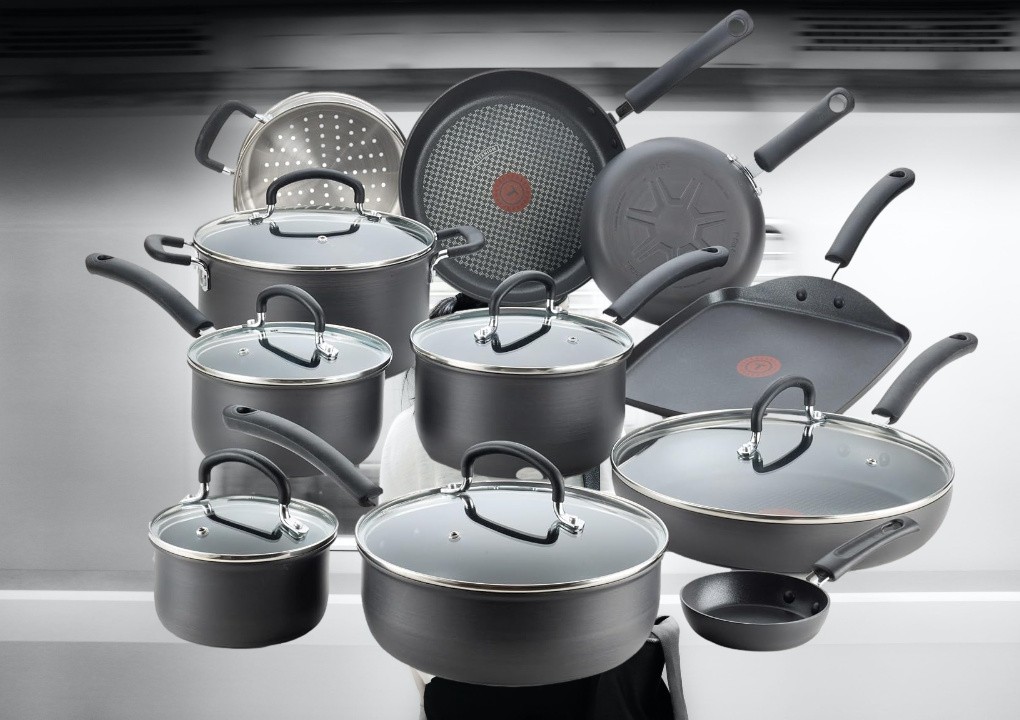Don't miss the Amazon Live Deals offer - OFFER!
Don't miss the Amazon Live Deals offer - OFFER!

Get the #1 Best Nonstick Cookware Set for Effortless Cooking
Explore the best nonstick cookware set for effortless cooking and elevate one’s culinary experience. With our selection of top-quality nonstick cookware, you can say goodbye to sticking and scraping and say hello to seamless cooking. Whether you’re a seasoned chef, kitchen novice, housewife, or daddy, our range of nonstick cookware selections is designed to make one’s cooking adventures a breeze. Prepare delicious meals easily, save time on cleanup, and enjoy the incredible convenience of nonstick cookware. Upgrade your kitchen arsenal today and unlock a world of effortless cooking.
Before heading into the depth of our subject, let us briefly look at “how to clean stainless steel cookware.” This brief guide looks at effectively maintaining your stainless steel cookware and getting it to a gleaming shine and pristine condition with our cleaning tips. Say goodbye to stubborn stains and residue as we reveal the secrets to keeping your stainless steel cookware looking as good as new. Whether you’re a novice or a seasoned chef, these techniques will revolutionize your kitchen routine. Ensure the longevity of your investment and enjoy the benefits of nonstick cookware that truly shines.
Stainless steel cookware is a popular choice among home cooks and professional chefs due to its durability, longevity, and resistance to rust and corrosion. To keep your stainless steel cookware looking and performing its best, it is important to clean it properly. Here are some main points on how to clean stainless steel cookware effectively:
By following these main points on how to clean stainless steel cookware, you can keep your pots and pans looking shiny and performing well for years to come. With proper care and maintenance, your stainless steel cookware will continue to be a reliable and valuable addition to your kitchen arsenal.
Stainless Steel Cookware Sets
The Story Behind Nonstick Cookware Set
Nonstick cookware has revolutionized the way we cook in our kitchens. Gone are the days of scrubbing and scraping to remove stuck-on food from our pots and pans. Nonstick cookware is designed to prevent food from sticking to the surface, making cooking and cleaning a breeze.
The key behind nonstick cookware is the coating that is applied to the surface of the pots and pans. This coating is typically made from polytetrafluoroethylene, better known as Teflon. Teflon is a synthetic material that is extremely slick and resistant to heat, making it the perfect material for preventing food from sticking.
Nonstick cookware comes in various forms, including frying pans, saucepans, and baking sheets. These products are available in various sizes and shapes to accommodate your cooking needs. Whether frying eggs in the morning or baking cookies in the afternoon, nonstick cookware is perfect.
One of the main benefits of nonstick cookware is that it requires less oil or butter to cook food, making it a healthier option for those looking to cut down on fat and calories. Additionally, because food is less likely to stick to the cookware’s surface, it is easier to cook delicate foods like fish and eggs without worrying about falling apart.
While nonstick cookware is a great option for everyday cooking, taking care of your pots and pans is important to ensure they last for years. Avoid using metal utensils on the surface of nonstick cookware, as this can scratch and damage the coating. Instead, opt for silicone or wood utensils to protect the nonstick surface.
In conclusion, nonstick cookware is a versatile and practical option for anyone looking to make cooking and cleaning up easier. With its nonstick coating and durable design, these pots and pans will surely become a staple in your kitchen. So, next time you are in the market for new cookware, consider investing in nonstick options for a hassle-free cooking experience.
If you are ever wondering if cooking in the kitchen, we can only use nonstick cookware stainless pans, then the answer is yes. There are the enameled cast iron cooking pots, which are also a favourite in many kitchens.








